This is a continuation of testing of the following macro lenses :
- Sony 90mm f/2.8 FE Macro
- Leica 100mm f/2.8 Apo Macro-Elmarit-R
- Zeiss 100mm f/2 Makro-Planar ZF
- Nikon 105mm f/2.8 Micro-Nikkor G VR
- and, now, the Coastal Optical 60mm f/4 UV-VIS-IR
The test starts here:
A few have expressed some surprise at the performance of the Coastal 60/4 at f/4 and f/5.6, which has prompted me to rerun the tests at 1:10 (one tenth of life size) magnification.
Here are the LoCA results at f/4:
The vertical axis is MTF50, measured in cycles per picture height (cy/ph). The horizontal axis is camera position shift in cm (not mm, as was the case in the 1:2 tests). The points on the left side of the graph are with the camera farther away from the subject than the points on the right. I used a 500 um (0.5 mm) step size. The three raw channels are plotted.
The 1:2 results are here:
There is more LoCA at 1:10 than at 1:2 magnification, but the MTF50 numbers are quite a bit higher.
Here are the 1:10 results for f/5.6, f/8, and f/11:
And here are the focus shift results:
For reference, here are the focus shift results at 1:2:
Don’t forget that the horizontal scale is different: mm in the 1:2 graph and cm in the 1:10 graph.
Two things stand out. The lens is much sharper at 1:10, and the focus shift is in the opposite direction. Is there a magnification between 1:2 and 1:10 where there is hardly any focus shift? Probably, but I’m not going to take the time to go searching for it. Did I mention that these tests are labor-intensive?
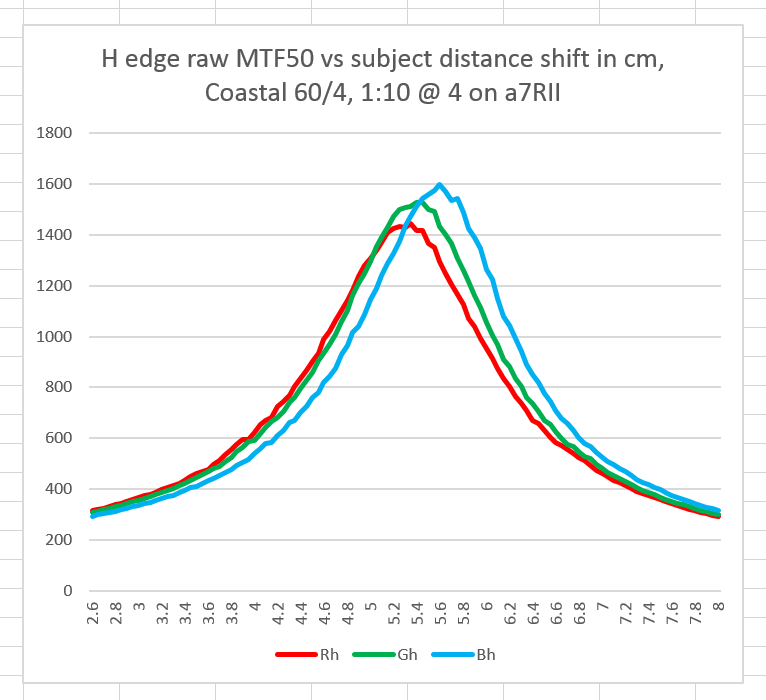
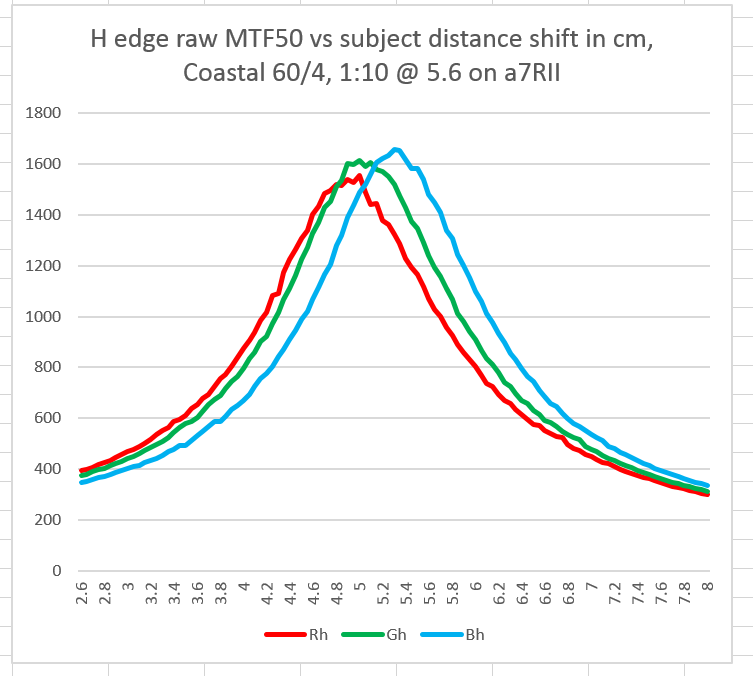
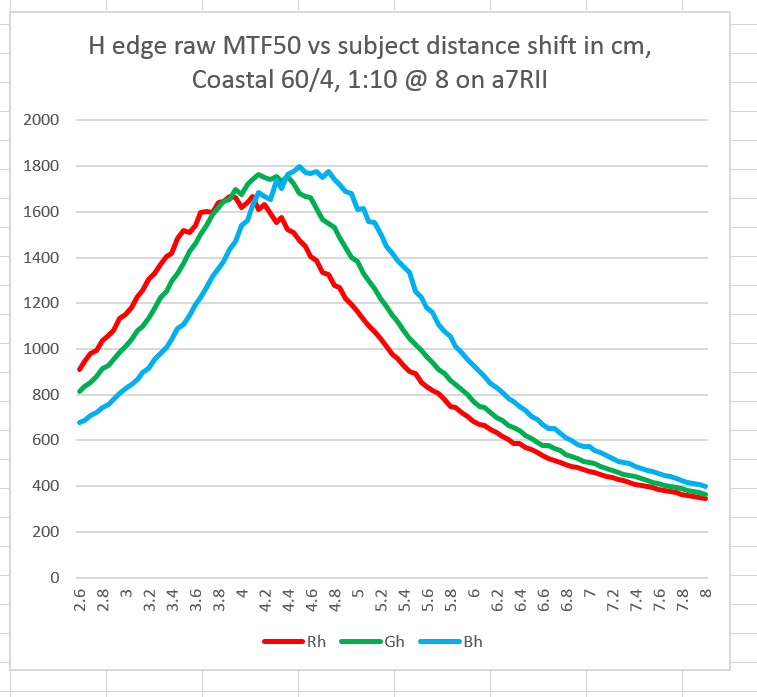
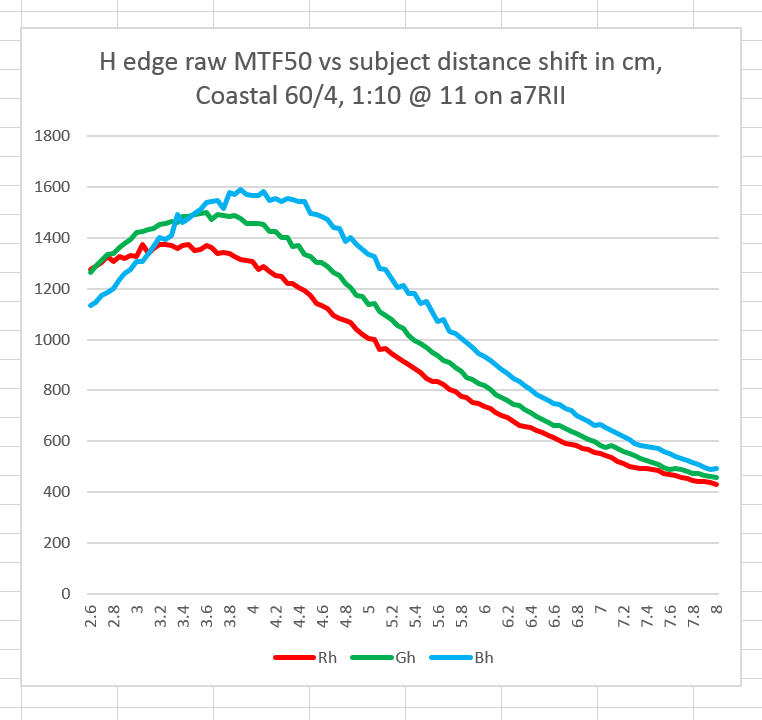
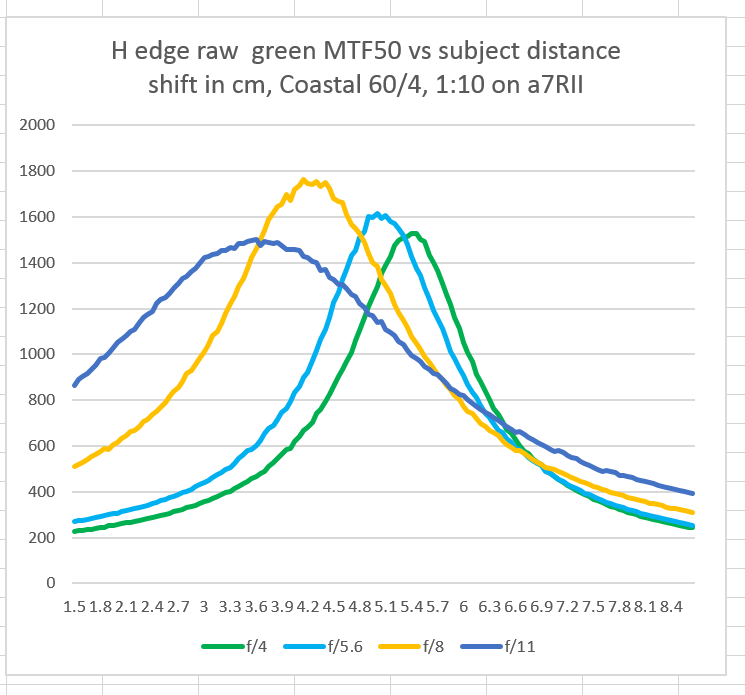
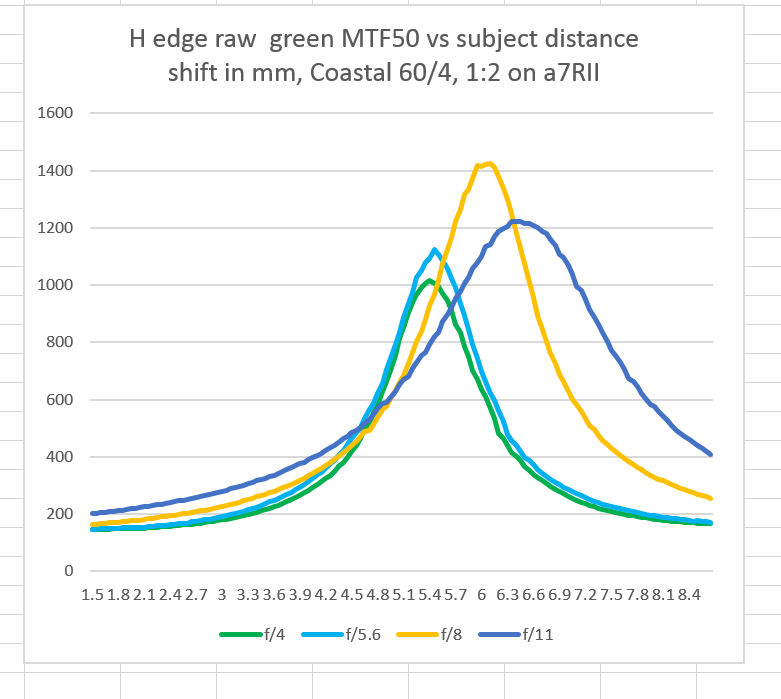
[…] 60 mm f/4 UV-VIS-IR. This is an apo lens on steroids, being corrected for UR and UV wavelengths as well as visible ones. I’ve tested it several times (here, here, and here), and found that it is pretty sharp, but […]